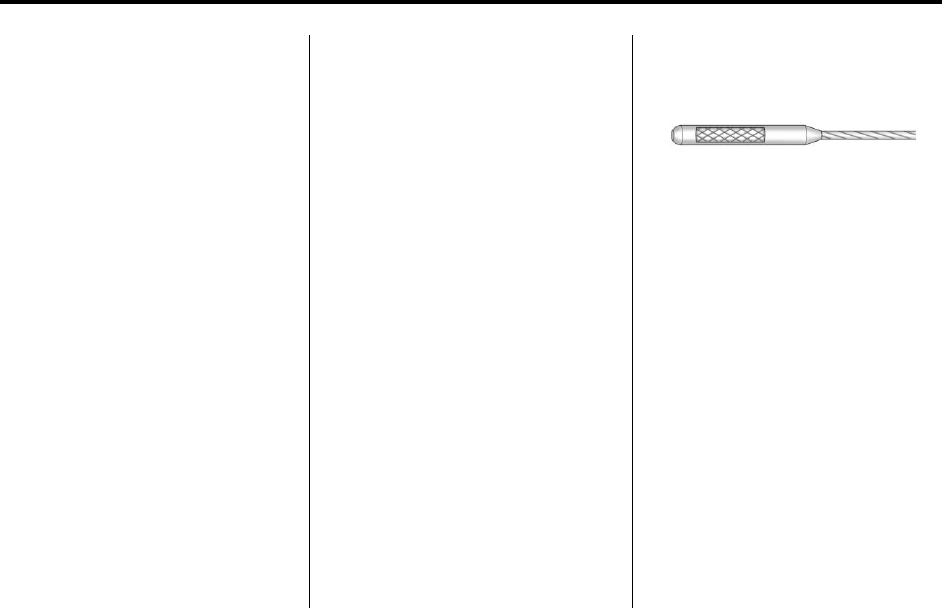
Vehicle Care 10-9
A. Engine Air Cleaner/Filter
on
page 10‑13
.
B. Engine Cover.
C. Engine Oil Fill Cap. See Engine
Oil on page 10‑9.
D. Engine Oil Dipstick. See Engine
Oil on page 10‑9.
E. Transmission Fluid Cap and
Dipstick. See Automatic
Transmission Fluid
on
page 10‑13
.
F. Brake Master Cylinder
Reservoir. See Brakes
on
page 10‑23
.
G. Power Steering Reservoir and
Cap. See Power Steering Fluid
on page 10‑21
.
H. Engine Coolant Reservoir and
Pressure Cap. See Engine
Coolant on page 10‑16.
I. Battery Cover. See Battery
on
page 10‑25
.
J. Engine Compartment Fuse
Block on page 10‑34.
K. Windshield Washer Fluid
Reservoir. See Washer Fluid
on
page 10‑22
.
Engine Oil
Checking Engine Oil
It is a good idea to check the engine
oil level at each fuel fill. In order to
get an accurate reading, the oil
must be warm and the vehicle must
be on level ground.
The engine oil dipstick handle is a
yellow loop. See Engine
Compartment Overview
on
page 10‑6
for the location of the
engine oil dipstick.
1. Turn off the engine and give the
oil several minutes to drain back
into the oil pan. If this is not
done, the oil dipstick might not
show the actual level.
2. Pull out the dipstick and clean it
with a paper towel or cloth, then
push it back in all the way.
Remove it again, keeping the tip
down, and check the level.
When to Add Engine Oil
If the oil is below the cross-hatched
area at the tip of the dipstick, add
at least one liter/quart of the
recommended oil. This section
explains what kind of oil to use. For
engine oil crankcase capacity, see
Capacities and Specifications
on
page 12‑2
.
Notice: Do not add too much oil.
If the engine has so much oil that
the oil level gets above the
cross-hatched area that shows
the proper operating range, the
engine could be damaged.


















